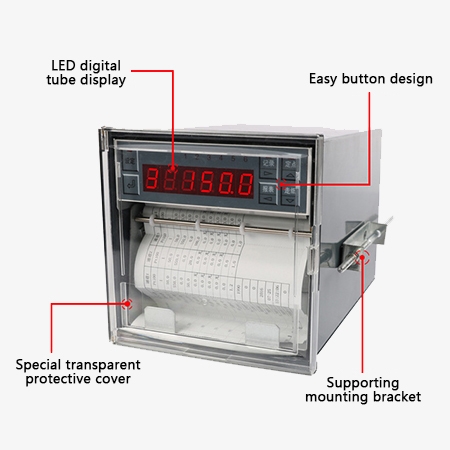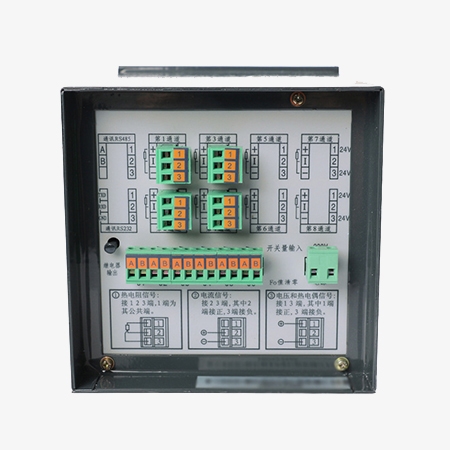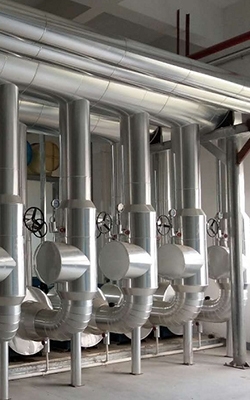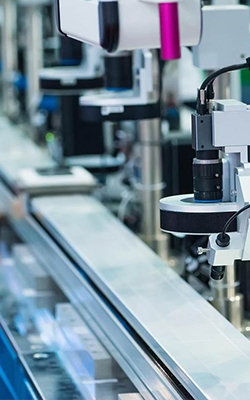SISCO chart recorder has a wealth of recording and printing functions, using Japanese royal paper, data can be stored for 10 years. The digital chart recorder uses a unique heat-printing record and advanced technology of microprocessor controlling.

Equipped with a 2-inch high-definition OLED LCD screen which can provide real-time data display
- The 2-inch OLED screen offers a clear, high-definition view of the recorded data in real-time, allowing users to instantly monitor the variables without waiting for the paper chart.
- The high-definition OLED display ensures sharp and detailed visuals, making it easier to interpret data trends directly from the screen.
- Users can view the real-time data on the OLED display while the paper chart continues to record, providing dual monitoring capabilities.
- The OLED screen's intuitive display makes navigating through settings and reviewing data simple, improving user interaction and efficiency.

The temperature chart recorder featuring 1-8 selectable plug-in terminal blocks
- The recorder supports 1 to 8 channels with selectable plug-in terminal blocks, allowing users to customize the number of inputs based on their monitoring needs.
- The plug-in design of the terminal blocks makes it simple to connect and disconnect sensors or inputs, streamlining installation and reducing downtime for maintenance.
- Users can start with fewer channels and expand up to 8 as needed, making the system adaptable for growing data monitoring requirements.
- The secure plug-in terminals ensure stable data transmission, reducing the risk of errors or interruptions in the recorded data.
Dimension

Applications
SISCO chart recorder is widely used in industrial and scientific applications to monitor and record variables such as temperature, pressure, humidity, and flow rate over time. Commonly employed in fields like manufacturing, environmental monitoring, HVAC systems, and laboratories, chart recorders help ensure process stability, compliance with regulations, and accurate data tracking for analysis and quality control. Their ability to provide a visual record of changing conditions makes them essential for long-term data monitoring and process optimization.

Environmental Monitoring

HVAC Systems

Laboratory

Manufacturing
| Model | SISCO-CR-R1000 |
| Number of Channels | 8-channel universal signal input |
| Input Signal | 0-20mV, 0-50mV, 0-100mV, 0-5V, 1-5V, 1-5V square root, 0-10V |
| Current Quasi-signal | 0-10mA, 4-20mA, 0-20mA square root |
| Six Types of Thermocouples | B, E, J, K, S, T |
| Three Types of Thermal Resistors | Pt100, Cu50, Cu100 |
| Alarm Output | Up to 6 channels, 250 VAC, 5A relay normally open contact |
| Channel Isolation | Input channels are isolated from each other and have no interference |
| Hardware Watchdog | Independent watchdog chip to ensure long-term safe and reliable operation of the host |
| Real-time Clock | Independent clock chip, powered by a lithium battery, no loss when power is off |
| Sampling Cycle | 0.6 seconds, that is, sampling each channel once every 0.6 seconds |
| Recording Paper | Using Japanese royal paper, data can be stored for 10 years |
| Power Supply | 100-240VAC; DC: 24VDC |
| Paper Feed Speed | Paper feed speed: 10mm/h to 1990mm/h |
| Dimensions | Dimensions: 144*144*240mm; Opening size: 138mm+1*138mm+1 |
| Weight | 1kg |
Q1: What is a chart recorder?
A1: A chart recorder is a device used to record data over time, typically in the form of a graph or chart on paper or digitally. It continuously monitors variables such as temperature, pressure, humidity, or flow rate using sensors, and then plots this data on a moving chart, which can be circular, strip-based, or digital. Chart recorders are commonly used in industrial, environmental, and laboratory settings to visually display trends and changes in these variables, ensuring proper control, monitoring, and record-keeping for processes and systems.
Q2: How often should the paper be replaced in a chart recorder?
A2: The paper in a chart recorder should be replaced when it becomes worn out, dirty, or when the current chart has completed its recording cycle and a new chart is needed to continue data logging. Regularly checking the paper for any signs of wear or damage is important to ensure the accuracy and clarity of the recorded data. The frequency of replacement will depend on several factors, including the type of chart recorder being used (such as circular or strip chart recorders), the duration of the recording cycle (daily, weekly, or monthly), and the intensity of use. Keeping the paper fresh and in good condition helps maintain accurate records and ensures the recorder operates smoothly.
Q3: What is the purpose of calibration in chart recorders?
A3: The purpose of calibration in chart recorders is to ensure accurate and reliable measurements by adjusting the device to match known reference values. Calibration involves comparing the chart recorder's sensor readings to standard or certified measurements and making necessary adjustments to correct any discrepancies. This process ensures that the data recorded, such as temperature, pressure, or other variables, accurately reflects the true values. Regular calibration is essential for maintaining precision, especially in applications where precise data monitoring is critical for safety, compliance, or quality control.
Tips: What maintenance is required for chart recorders?
Maintenance for chart recorders is essential to ensure accurate and reliable performance. Key maintenance tasks include:
- Regular Calibration: Ensure the sensors and recording mechanisms are calibrated periodically to maintain accurate data recording. This should be done based on manufacturer recommendations or industry standards.
- Paper and Pen Replacement: For analog models, replace the paper and pens regularly. Worn-out pens can cause inaccurate readings, while old paper may tear or jam during operation.
- Inspect Moving Parts: Check and lubricate mechanical components like gears and motors in analog recorders to ensure smooth operation and avoid paper jams or recording interruptions.
- Sensor Check: Periodically inspect the sensors for any damage, corrosion, or wear, especially in harsh environments, as faulty sensors can lead to inaccurate measurements.
Clean the Unit: Dust and debris can accumulate, especially in paper-based chart recorders. Clean the unit to prevent blockages or interference with the recording mechanism.
Thank you for buying industrial test and measurement equipment on SISCO.com, all products sold by SISCO and the partner cover a 12 months warranty, effective from the date of receiving the products.
What is covered?
SISCO is responsible for providing free spare parts, and free technical support to assist the customer to repair the defective products until the problem is solved.
What is not covered?
- Product purchased from anyone other than a SISCO store or a SISCO authorized reseller.
- Expendable parts.
- Routine cleaning or normal cosmetic and mechanical wear.
- Damage from misuse, abuse or neglect.
- Damage from use of parts other than SISCO approved.
- Damage from use outside the product’s usage or storage parameters.
- Damage from use of parts not sold by SISCO.
- Damage from modification or incorporation into other products.
- Damage from repair or replacement of warranted parts by a service provider other than a SISCO authorized service provider.
- Damage caused by the application environment not meeting the product usage requirements and the failure to perform preventive maintenance.

